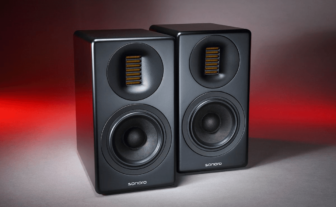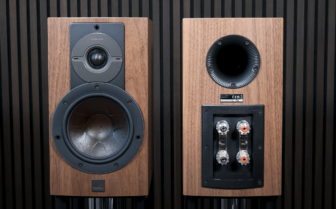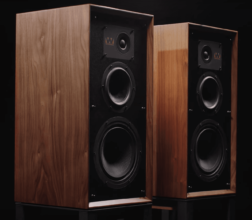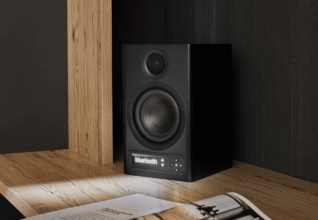Acoustic Energy AE100 Review
Compact speakers like the AE100 usually elicit a verbal urge to cuddle, which often leads to platitudes like “small but mighty.” In this case, veteran Acoustic Energy has created a well-proportioned, audiophile bundle of joy with a simple but top-quality crafted cabinet. Those familiar with airplanes might be reminded of the legendary Supermarine Spitfire of the Royal Air Force, which was originally developed in the 1930s as a racing aircraft. The goal behind it: take the powerful 12-cylinder Rolls-Royce Merlin engine, plan for a pilot, and tailor the smallest possible fuselage around it.
Stefan Schickedanz
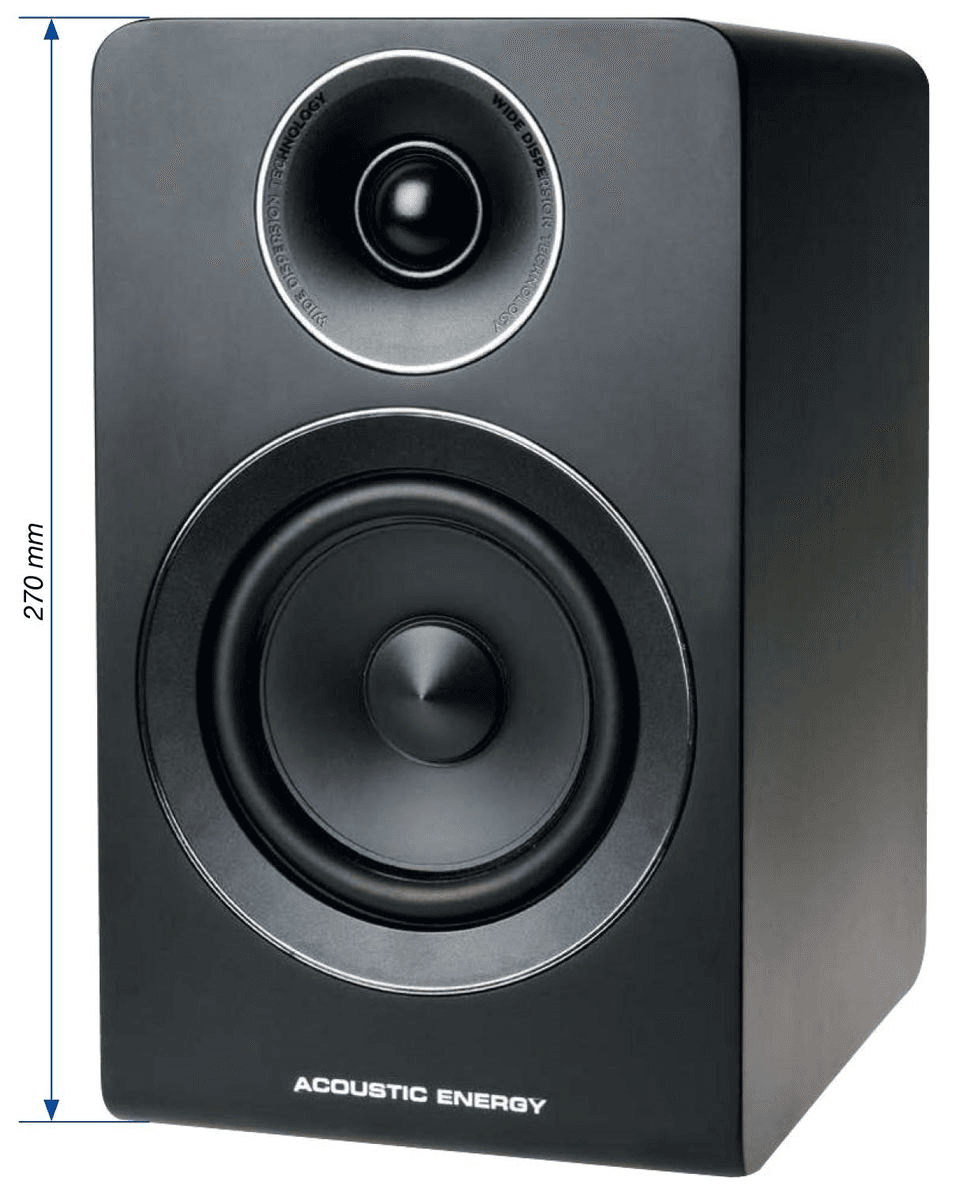
Specs
| PRODUCT | Acoustic Energy AE100 |
| ORIGIN | UK/Malaysia |
| TYPE | 2-way standmount loudspeaker |
| WEIGHT | 4.5kg |
| DIMENSIONS (WxHxD) | 160 x 270 x 240mm |
| FEATURES | 1x 25mm soft dome tweeter 1x 100 mm paper mid/bass driver Quoted sensitivity: 87dB/1W/1m (4ohm) |
Bundle of Energy
This purist maxim is exemplified in the AE100, whose front panel protrudes as little as possible beyond the two promising drivers. It seems to embrace them tightly, enclosing them seamlessly without visible screws. As a result, the sound waves can spread out in all directions largely unhindered, which benefits the imaging.
According to specifications, the AE100 achieves a dispersion angle of 120 degrees both horizontally and vertically. Acoustic Energy draws the necessary volume for the bass from the depth of the cabinet—a classic monitor design of the English school. The 10.2 cm mid-bass driver, equipped with a phase plug, receives the necessary support through a rear slotted bass reflex port with a large cross-section, intended to avoid disturbing turbulences. These air vortices cause noises that lead to coloration in the midrange. Its drive system received a power boost compared to the previous series because the Brits want to take the congenial combination of living room-friendly dimensions and rich sound in their new AE100 to the extreme.
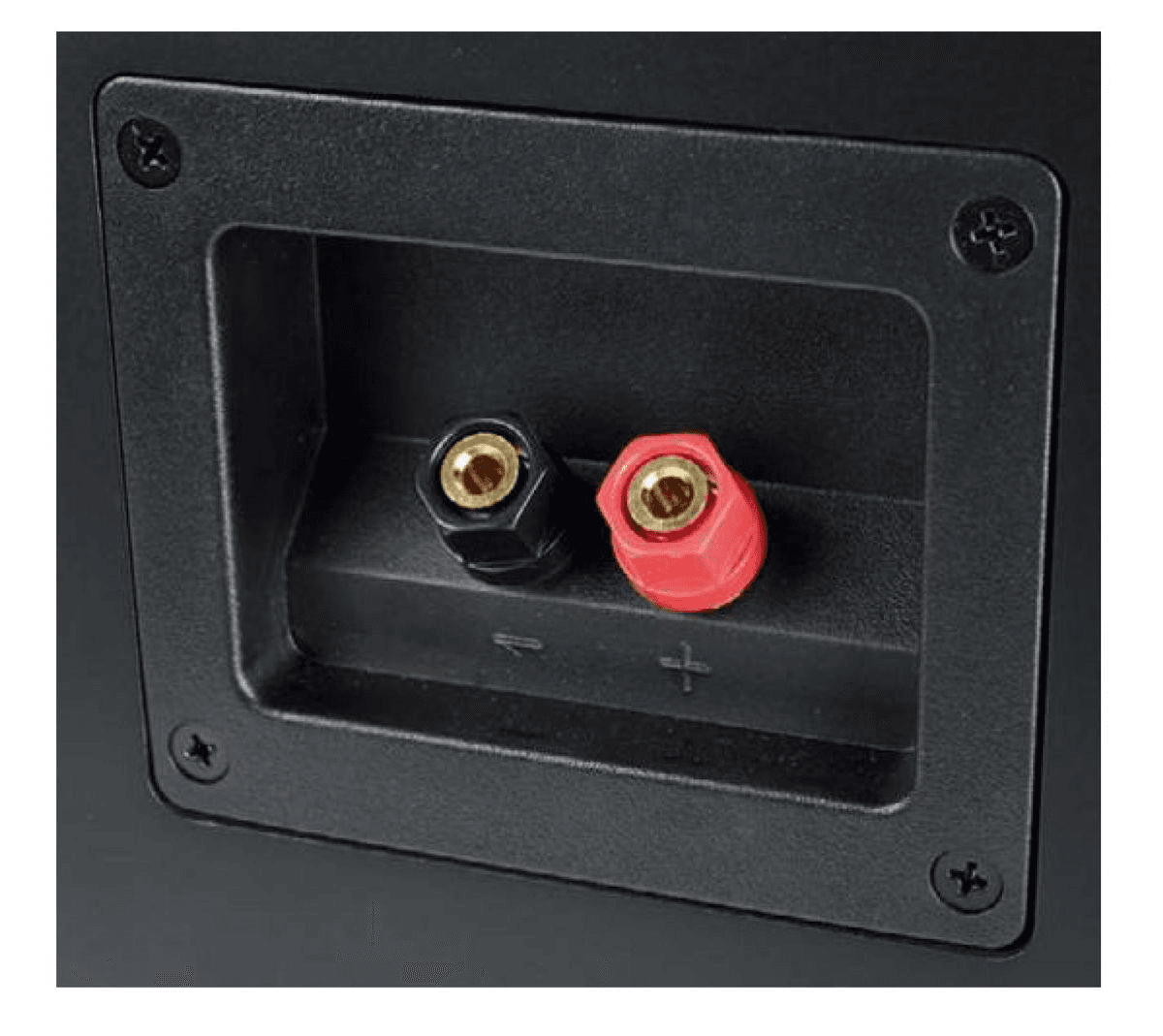
AE Goes the Distance
For the tweeter, Acoustic Energy relies on its Wide Dispersion Technology (WDT). This waveguide is a further development of the DXT lens from the Reference Series. It is also found on the AE1 Active.
The goal behind this is a better acoustic coupling to the room and to the mid-bass driver, as well as more stable imaging with a wider listening area. The British speaker specialists succeed exemplarily in the midrange. Only in the upper part of the transmission range does the 2.8 cm soft dome begin to narrow its dispersion.
The cabinet of the small monitors is very well crafted. Instead of sharp edges, there are cleanly rounded corners and drivers carefully recessed into the 1.8 cm thick MDF baffle. In black, silk-matte lacquer, the AE100 appears discreetly elegant. However, it is also available with walnut décor, giving it a slight retro look, though this is greatly softened by the elegant curves of the edges.
No Experiments
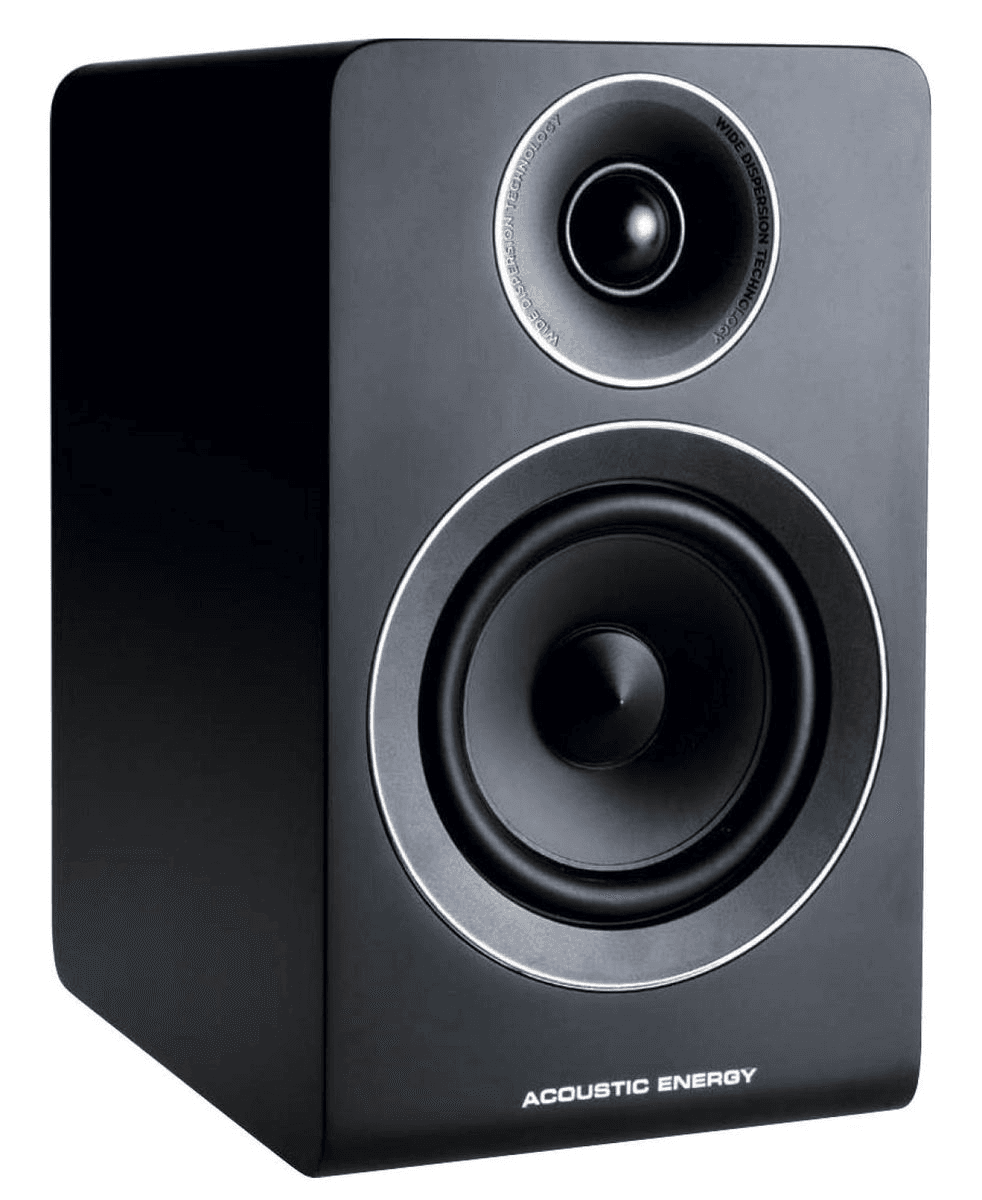
Not at all stylish but highly functional, the connections on the back present themselves with stable plastic screw terminals whose contact surfaces are gold-plated. Thus, banana plugs also find a corrosion-resistant receptacle. However, bi-wiring or bi-amping experiments are not possible. The two-way crossover separates both frequency ranges at 3.6 kilohertz, and Acoustic Energy’s long experience, especially in connection with waveguides, is evident in the frequency response measurement, where nothing unusual is seen either on-axis or off-axis. There are no indications in the distortion diagram either. However, the overall distortion level was somewhat high but at least evenly distributed. After all, individual distortion peaks are more noticeable when listening than a slightly elevated base level. The decay spectrum also gives the developers a good report, as does the clean impulse response. Above all, the lower cutoff frequency of the tiny AE100 is at 55 Hz (-6 dB). Even the -3 dB point lies at respectable 67 Hz. However, the ambitious designers pay a price for this: At 93 dB, it’s the end of the line for turning up the volume. For this, there is only a slight compression of 0.1 dB in the bass—a great value.
What the little Brit then showed acoustically underlined its claim to be a big player among compact speakers. It played music relaxedly and broadly with the highest meticulousness and naturalness. Exactly as one would expect from a monitor but usually not at this price. Even freely placed in the well-damped, large 7Review listening room, it did not completely fade away. However, one doesn’t necessarily do it a favor with too much freedom. It is a wallflower that, like a paranoiac, only feels really comfortable with the wall at its back. Thanks to the good radiation pattern, it could be placed parallel on stands. Then there was a great coupling to the room with evenly distributed soundstage, wide listening area, and a hefty amount of bass.
Living Room Studio Feeling
British two-way monitors are the epitome of neutrality. In this respect, the extremely coherent, neutral but never sober sound was no big surprise, even though everything here appeared seamless with every music genre. The magic word was timing. With their full and remarkably dry punch, the minis could make drums seem a lot bigger than one would have thought possible. This lively, even surprisingly loud, gripping performance is accessible even with affordable amplifiers, provided they can handle some voltage and current, making the sensation perfect.
Verdict
Acoustic Energy AE100 MK 2 Speakers "ENTRY LEVEL" HiFi Done RIGHT !
This is my video review for the NEW Acoustic Energy AE100 mark 2 HiFi Speakers, they are an entry level stand mount / bookshelf ...



